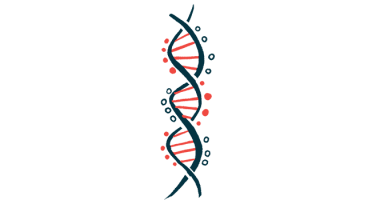Magel2 Gene Research Yields Potential Therapeutic Strategy
Method lowered diet-induced weight gain in Prader-Willi syndrome mice

Reduced activity of the Magel2 gene, which is defective in Prader-Willi syndrome (PWS), specifically in nerve cells that supply the brain’s amygdala, lowered the susceptibility to diet-induced weight gain by increasing physical activity.
The researchers noted that these unexpected findings from a mouse study may provide a novel therapeutic strategy for treating excess body weight gain in individuals with PWS.
The study, “Magel2 knockdown in hypothalamic POMC neurons innervating the medial amygdala reduces susceptibility to diet-induced obesity,” was published in the journal Life Science Alliance.
PWS is a genetic disorder caused by the loss of, or defects in, multiple paternal genes on chromosome 15. A hallmark of the condition is an abnormally increased appetite, known as hyperphagia, which can lead to obesity.
Among the genes lost in PWS, the Magel2 gene functions in proopiomelanocortin (POMC) nerve cells (neurons) within the hypothalamus, an area of the brain that controls many bodily processes, including temperature, hunger, thirst, and sleep. When activated, these POMC cells inhibit food intake, and when suppressed, they enhance food intake and increase obesity risk.
Nerve fibers from POMC cells extend into (innervate) the brain’s amygdala, which plays a role in processing memory, decision-making, and emotional responses, such as fear, anxiety, and aggression. These connections to the amygdala also are implicated in feeding behavior control, but their role in PWS requires more study.
Researchers at the Albert Einstein College of Medicine, in New York, investigated the impact of reduced Magel2 gene activity seen in PWS, specifically in POMC cells that communicate with the amygdala.
First, the team confirmed that more than 60% of hypothalamus POMC neurons in male mice were positive for MAGEL2, the protein encoded by the Magel2 gene.
Next, the activity of the Magel2 gene was artificially suppressed in hypothalamus POMC neurons that specifically connect to the amygdala in mice to assess their role in energy balance. Experiments confirmed lower Magel2 gene activity and fewer MAGEL2-positive cells.
An unexpected finding
Unexpectedly, when fed a high-fat diet, Magel2-reduced male mice gained significantly less body weight than control mice with regular gene activity, which was associated with a reduction in body fat. This lack of weight gain was not due to reduced food intake, but rather an increase in physical activity. Interestingly, nighttime motor activity in Magel2-reduced male mice was higher than that in the control group.
Glucose metabolism was unaffected by lower Magel2 gene activity in these neurons, as shown by no differences in blood glucose levels, glucose tolerance tests, or insulin tolerance or levels.
Likewise, female mice with suppressed Magel2 gained less body weight with a high-fat diet due to significantly less accumulated body fat. Again, increased physical activity was responsible for a lack of weight gain and not reduced food intake. Glucose metabolism also was unaffected.
Estrogen, a female sex hormone, drives physical activity in female mice by activating the estrogen receptor-alpha (ER-alpha) in the brain, including in the hypothalamus and amygdala. Blood tests revealed significantly higher estrogen levels in female mice with reduced Magel2 than in the control group.
Notably, blocking the ER-alpha receptor led to a significant increase, rather than a decrease, in physical activity at night.
“These unexpected findings suggest that activation of the nuclear ER-[alpha] may not increase physical activity in female [Magel2-reduced] mice,” according to the researchers.
The team then explored the brain’s G-protein-coupled estrogen receptor (GPER), which is involved in regulating metabolism. Experiments confirmed the presence of GPER in the hypothalamus and amygdala.
In contrast to the effects of the ER-alpha blocker, a GPER blocker in female mice with low Magel2 did not induce higher physical activity, suggesting that GPER produced in the hypothalamus and amygdala may help control motor activity in these mice, the researchers said.
Altogether, reduction of Magel2 gene activity in hypothalamus POMC neurons that innervate the amygdala elevated estrogen levels, which may result in activation of central GPER in female mice, promoting physical activity and weight loss, the researchers suggested.
“Our studies may provide a novel therapeutic strategy for treating excessive body weight gain in individuals with PWS,” they wrote.
This study “provided physiological evidence for the role of the Magel2 gene in [hypothalamus] POMC neurons innervating the amygdala in the control of energy balance,” the study authors added.







